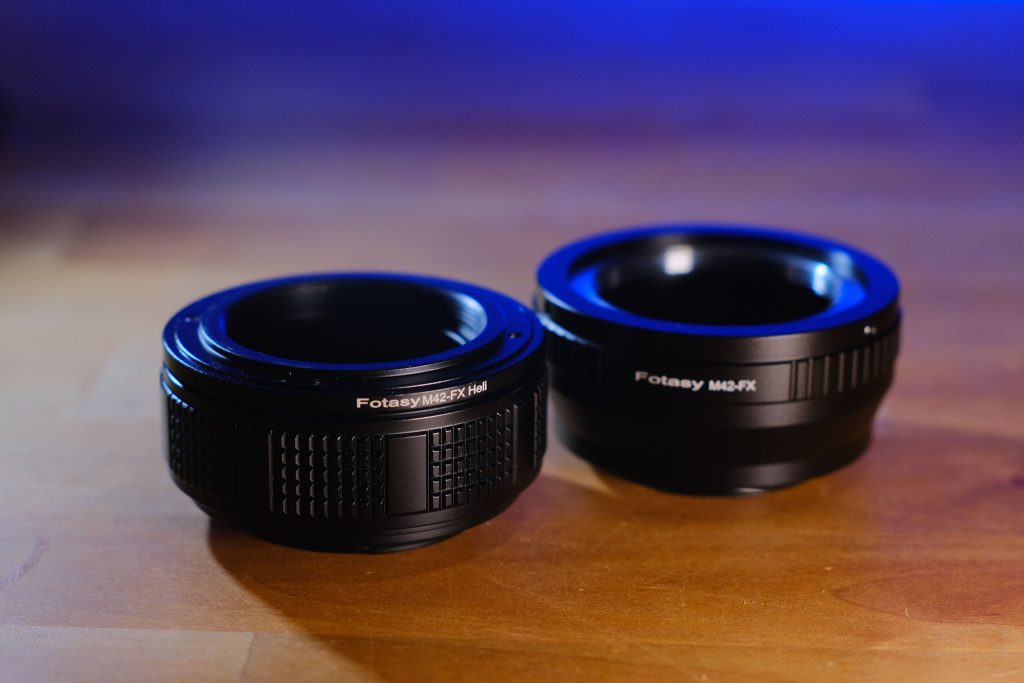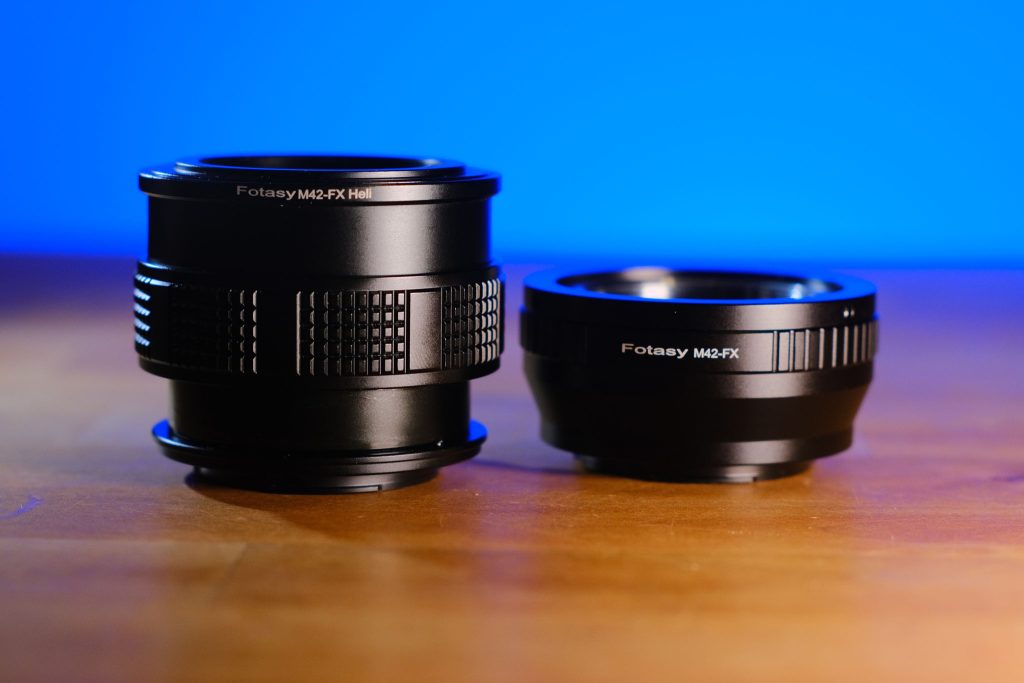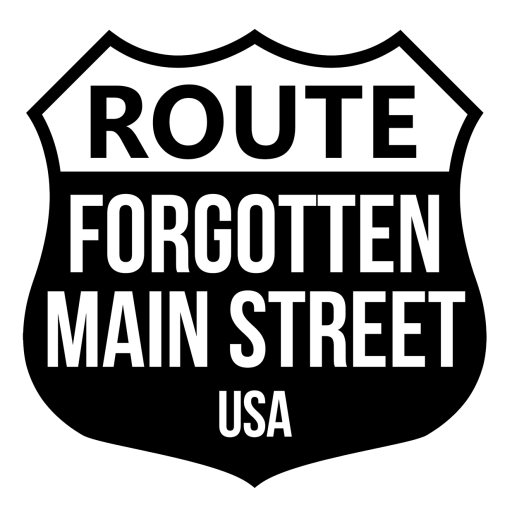Adapters allow you to use different older lenses on your modern cameras. Many camera makers have kept the same basic mounting system for long spans of time, like the Nikon “F” mount. Using a vintage Nikon mount camera on a modern DSLR is a simple process of carefully attaching the lens to the camera, being careful that any connections align properly. Of course, using an older “F” mount lens will come with some shortcomings, such as no electronic communication, autofocus, and limited autoexposure modes. You may have to check the menu to allow the camera to shoot without a lens, since the camera will not know a lens is attached without the electronic contacts lacking on the older lenses. However, this is a very easy way to enter into the vintage lens arena by using your camera makers older lenses. You will have to research the history and options within your brand.

Most of the lens adapters required for this field fall basically into two groups. Mount adapters and macro helicoid adapters. While both perform the same function to allow you to attach a different brand’s mount to your camera, the helicoid adapter adds a close focusing or macro adjustment. The latter being a little mroe expensive will give you that added bonus of close focusing since many older lenses designs didn’t allow a good MFD – minimum focusing distance.
Let’s tackle the most basic of adapters and normally the first one the majority of photographers purchase to use vintage lenses with their modern camera. We would suggest starting with the easy to find M42 adapter to your particular camera brand. We use the Fujifilm X mount mirrorless system for it’s amazing color science, travel size and exterior retro controls. So you choose the M42 – Fujifilm X adapters to attach vintage M42 lens mounts to our cameras. The adapters perform two key functions, one is the ability to use different branded lenses on the cameras and have a precise distance for the lense to focus at infinity. The Fujifilm X system is mirrorless and the vintage lenses were desinged for an SLR with a mirror, so the adapter length is important to position the lens group far enough from the sensor to allow the lens to focus it’s entire range. It basically makes up the distance that is missing from the mirror box of the original design. You will have to pruchase several of these to match up different branded mounts to your camera.
The second type of basic adapter is the helicoid macro adapter. It performs the same as the previous but also has the ability to extend the barrel to act as an adjustable extension tube. It’s quite remarkable and works great for capturing small details. In fact, I wish I knew about these little gems earlier in my career for close-up work. I’ve used fixed size macro extension tubes at weddings shooting rings and details on various lenses in a trail and error process to get the right composition and focus. Now, with these helicoids adapters it’s as easy as a quick twist of the ring. Try one and you will be hooked, making every vintage you into a close closing macro rig.

When using these adapters on crop-sized sensors, one thing to consider is the magnification factor of using full framed lenses on your camera. The Fujifilm X system uses a factor of 1.5x, so a 50mm vintage lens will behave as a 75mm lens. You will quickly find yourself looking at the more expensive line of ultra-wide angle vintage lenses to get a normal wide for your crop factor modern camera. We both have a Mamiya-Sekor SX 21mm f4 – which we love – that works about a 30mm lens.
There are lots of brands of these two basic types of adapters, but we would highly suggest the Fotasy, K&F Concepts, Fotodiox and Kipon brands for consistency and quality.
One word of caution with adapters, if you are adapting manual focus vintage lenses, then there is no benefit to purchasing more expensive adapters with electronic contacts or autofocusing adapters. One of the major benefits of using vintage lenses is the ability to capture beautiful images without breaking in the bank.

